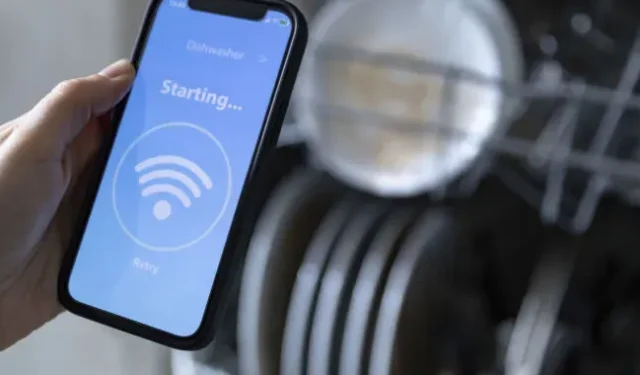Appliance manufacturers upset that 50% of customers will not connect smart devices

Appliance manufacturers like Whirlpool and LG just can’t figure it out. They added Wi-Fi antennas to their latest dishwashers, ovens and refrigerators and created apps for them, and yet only 50 percent or less of their owners have them connected. What gives?
The problem, according to manufacturers cited in a Wall Street Journal report (usually requires a subscription), is that consumers simply don’t know about everything a manufacturer can do if users plug in a device that spins their clothes or cools their food. for example, “providing manufacturers with data and information about how customers use their products”, and enabling companies to “send updates over the air”and “sell related replacement parts or subscription services”.
“The problem is that the consumer does not see the true value that manufacturers see in terms of how this data can help them in the long run. So they don’t care about wasting time just plugging it in,”Henry Kim, director of LG ThinQ’s US smart device division, told the magazine.
LG told the magazine that less than half of its smart devices, which account for 80 to 90 percent of devices sold, remain connected to the internet. Whirlpool said “more than half”are connected. Smart devices connected to Wi-Fi may be connected on first set up, but a new ISP, router hardware, or Wi-Fi password may disable the device. And the smart oven will most likely be far off the list of devices to set up again once that happens.
This means companies like Whirlpool are missing out on service revenues, which is becoming increasingly important for manufacturers facing rising production costs, declining replacement purchases and hungry shareholders. Whirlpool acquired Yummly’s recipe management app in 2017, and its customers can sync a Yummly Pro subscription with a smart oven to have it follow the recipe’s instructions (which apparently must sometimes go beyond “heat to this level”).
For its part, LG noticed a gradual increase in water filter sales when it tracked water volumes in connected refrigerators versus unconnected refrigerators, the Journal reported. Both companies have also proposed that new features, including security alerts, be issued to connected customers.
Whirlpool told the magazine that customers “have the option to opt-in or opt-out”of sharing data with the company. LG does not offer this option, but Kim told the magazine that “all data is anonymized.”
While manufacturers blame technical limitations, some customers may simply be reluctant to provide companies with vague privacy policies or bad histories of secure access to their networks.
In 2013, LG smart TVs were found to be uploading extensive data to their servers about all activities occurring on them, including browsing files on USB drives. At the time, LG admitted that it had collected this data, but suggested that the data was not personal and was only used for ad targeting or as part of software projects that were discontinued. LG is far from the only TV manufacturer to be involved in automated content recognition, but it is one of a select few that also makes dishwashers.
More broadly, smart home (or Internet of Things, or IoT) devices are all too often built with a “get it, download it, whatever” mindset. Take test models from iRobot/Roomba (which could potentially be purchased by Amazon), which uploaded images of a person in a toilet to the cloud. Or any of the dozens of devices detailed in the Institute of Electrical and Electronics Engineers study, the Northeastern/Imperial College survey, or the Mozilla Foundation’s “Privacy Not On”list. The issues are so widespread and varied that the White House has called for a universal IoT security label.
Appliance manufacturers want customers to plug in their smart devices, but at least some of them may think they’re smart enough to let them work offline.
Leave a Reply